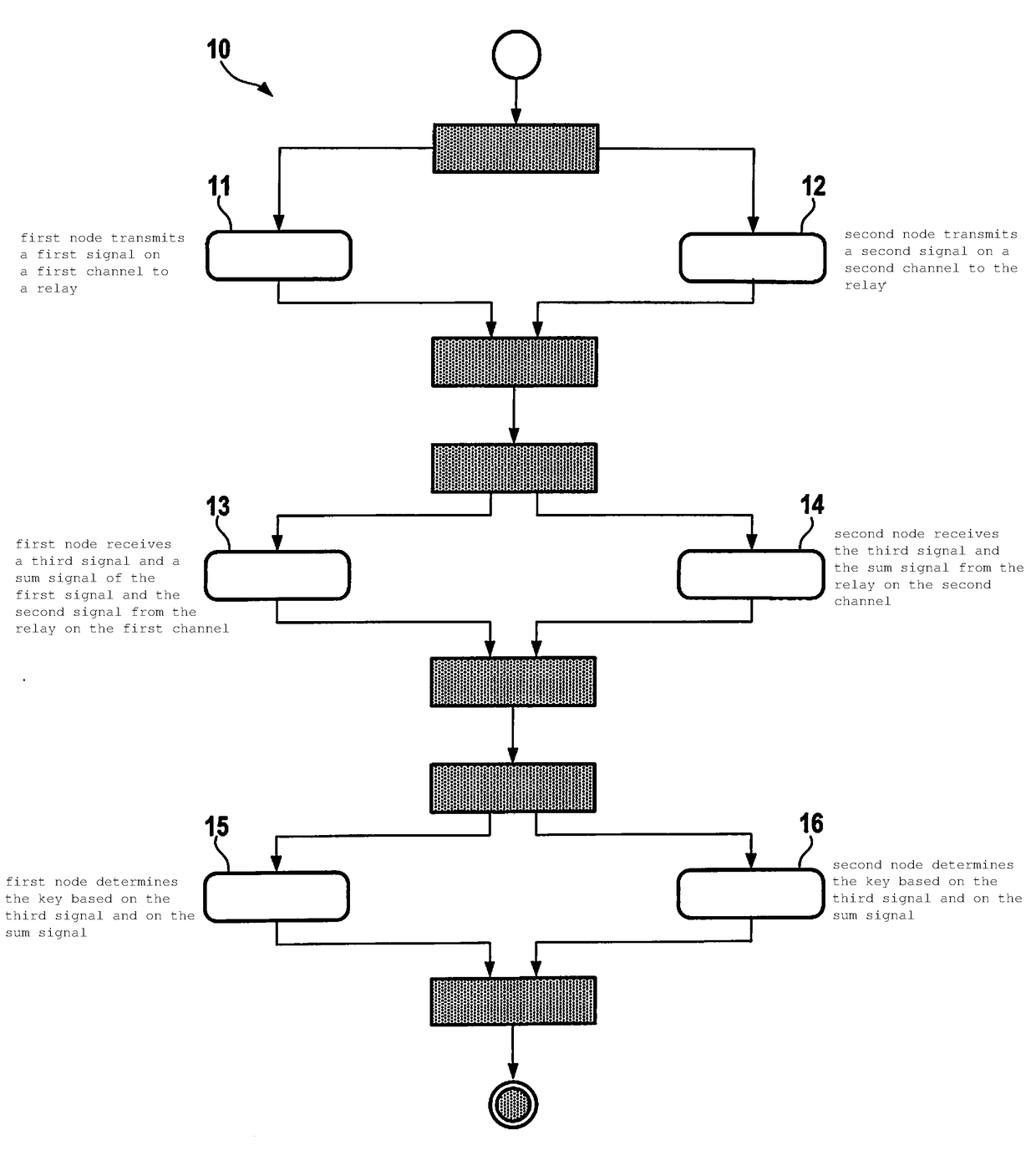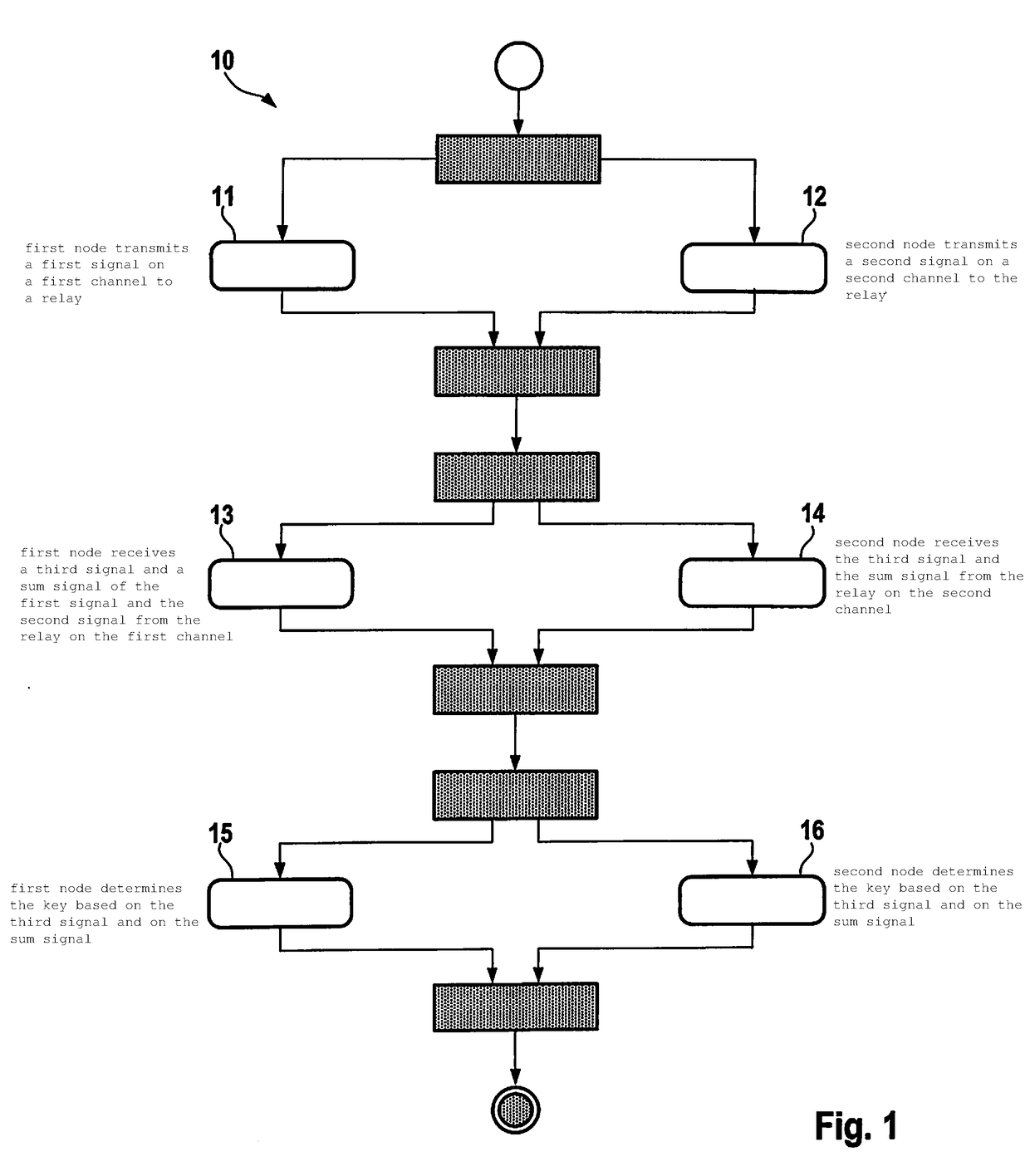Method and device for generating a cryptographic key
a cryptographic key and key generation technology, applied in the direction of digital transmission, securing communication, electrical equipment, etc., can solve the problem that none of the aforementioned devices needs to be capable of duplex transmission, and achieve the effect of optimizing the key generation rate or residual error rate, and positively influencing the measured signal-to-noise ratio
- Summary
- Abstract
- Description
- Claims
- Application Information
AI Technical Summary
Benefits of technology
Problems solved by technology
Method used
Image
Examples
Embodiment Construction
[0026]FIG. 1 illustrates in a schematically simplified manner the base sequence of a method (10) according to the present invention: a first node transmits a first signal on a first channel to a relay (action 11); a second node transmits a second signal on a second channel to the relay (action 12); the first node receives (action 13) a third signal and a sum signal of the first signal and of the second signal from the relay on the first channel; the second node receives the third signal and the sum signal from the relay on the second channel (action 14); the first node determines the key based on the third signal and on the sum signal (action 15); and the second node determines the key based on the third signal and on the sum signal (action 16). The aim of this approach is for the first node and the second node to generate with the aid of the relay cryptographic keys, which remain unknown to third parties, while using a potentially static direct connection.
[0027]To illustrate a firs...
PUM
 Login to View More
Login to View More Abstract
Description
Claims
Application Information
 Login to View More
Login to View More - R&D
- Intellectual Property
- Life Sciences
- Materials
- Tech Scout
- Unparalleled Data Quality
- Higher Quality Content
- 60% Fewer Hallucinations
Browse by: Latest US Patents, China's latest patents, Technical Efficacy Thesaurus, Application Domain, Technology Topic, Popular Technical Reports.
© 2025 PatSnap. All rights reserved.Legal|Privacy policy|Modern Slavery Act Transparency Statement|Sitemap|About US| Contact US: help@patsnap.com



